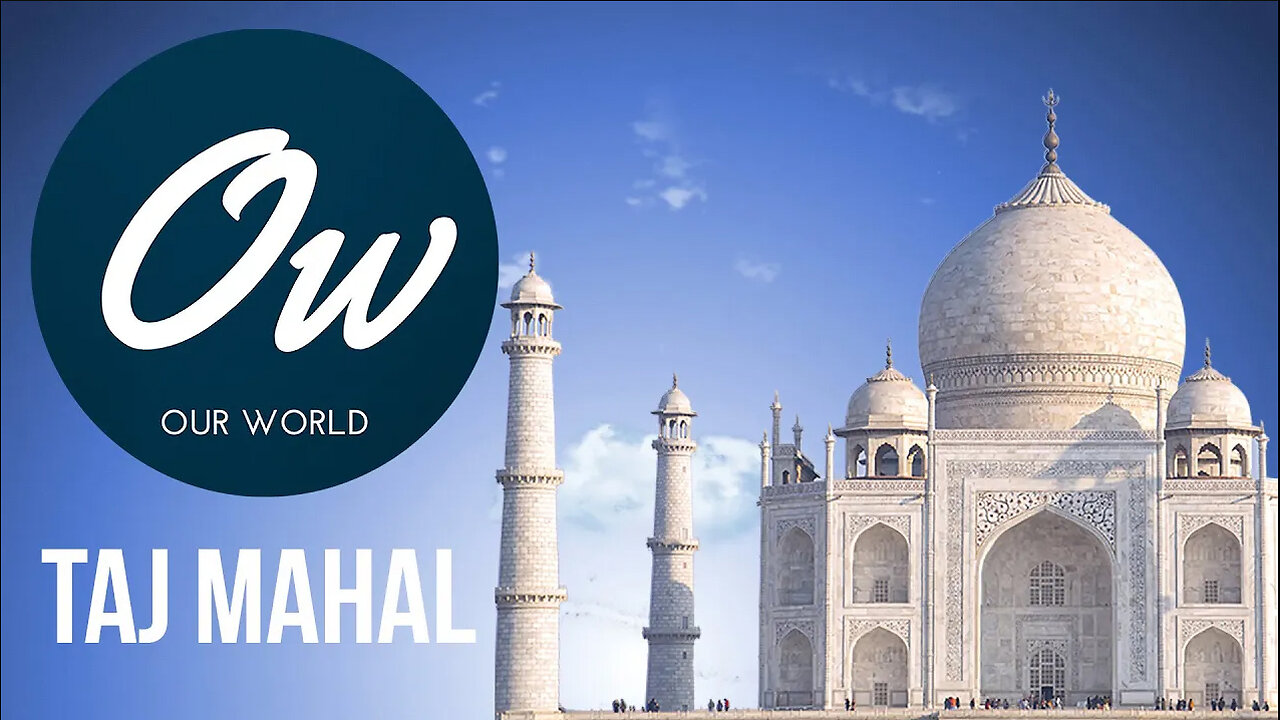Premium Only Content

Taj Mahal, Agra, India
The Taj Mahal, is an Islamic ivory-white marble mausoleum, on the right bank of the river Yamuna, in the Indian city of Agra. It was commissioned in 1632, by the Mughal emperor Shah Jahan, to house the tomb of his favorite wife, Mumtaz Mahal; it also houses the tomb of Shah Jahan himself. The tomb, is the centerpiece of a 17-hectare complex, which includes a mosque and a guest house, and is set in formal gardens bounded on, three sides by a crenellated wall.
Construction of the mausoleum, was essentially completed in 1643, but work continued on other phases of the project, for another 10 years. The Taj Mahal complex, is believed to have been completed in its entirety in 1653, at a cost estimated at the time, to be around 32 million rupees, which in 2020, would be approximately 70 billion rupees (about 1 billion US dollars). The construction project employed some 20,000 artisans, under the guidance of a board of architects, led by the court architect to the emperor, Ustad Ahmad Lahauri. Various types of symbolism have been employed, in the Taj to reflect natural beauty and divinity.
The tomb is the central focus, of the entire complex of the Taj Mahal. It is a large, white marble structure standing on a square plinth, and consists of a symmetrical building, with an iwan (an arch-shaped doorway), topped by a large dome and finial. Like most Mughal tombs, the basic elements are Indo-Islamic in origin.
The most spectacular feature is the marble dome, that surmounts the tomb. The dome is nearly 35 metres high, which is close in measurement, to the length of the base, and accentuated by the cylindrical "drum" it sits on, which is approximately 7 metres high. The top is decorated with a lotus design, which also serves to accentuate its height. The shape of the dome, is emphasised by four smaller domed chattris, placed at its corners, which replicate the onion shape of the main dome. The dome is slightly asymmetrical. Their columned bases open through the roof of the tomb, and provide light to the interior. Tall decorative spires extend from edges of base walls, and provide visual emphasis to the height of the dome. The lotus motif, is repeated on both the chattris, and spires. The dome and chattris, are topped by a gilded finial which mixes traditional Persian, and Hindustani decorative elements.
The Taj Mahal, was designated as a UNESCO World Heritage Site, in 1983 for being "the jewel of Muslim art in India, and one of the universally admired, masterpieces of the world's heritage". It is regarded by many as the best example of Mughal architecture, and a symbol of India's rich history. The Taj Mahal attracts more than 6 million visitors a year, and in 2007, it was declared a winner of, the New 7 Wonders of the World initiative.
-
 LIVE
LIVE
Jeff Ahern
1 hour agoNever woke Wednesday with Jeff Ahern (The leftist Gravy train ends)
463 watching -
 18:51
18:51
Neil McCoy-Ward
1 hour agoNetflix Users May Be FORCED To Buy A TV Licence!! (This Is Getting CRAZY!)
3.81K4 -
 1:26:43
1:26:43
Game On!
10 hours ago $1.78 earnedThe Debate is OVER! It was ALL Brady, not Belichick!
9.21K1 -
 17:53
17:53
Producer Michael
20 hours agoI'VE NEVER SEEN SO MANY LIMITED EDITION WATCHES!
33.4K9 -
 12:04
12:04
SOFTDRINKTV
12 hours ago $11.07 earnedAre NBA 2K's Graphics Getting Worse?
80.4K7 -
 30:54
30:54
World Nomac
20 hours agoSurprising honest locals in Tondo Philippines with rewards 🇵🇭
43.9K1 -
 49:30
49:30
CarlCrusher
14 hours agoAlien Abductions with Magic Wands?
29.8K12 -
 5:46
5:46
America First Policy Institute
16 hours agoSchool Choice Empowering Parents, Transforming Futures America First Policy Institute #schoolchoice
17.6K3 -
 1:00:40
1:00:40
PMG
19 hours ago $6.37 earnedNo Security for Fauci & Was It Known That the mRNA COVID Vaccines Would Cause Cancer?
25.2K24 -
 3:17:30
3:17:30
Price of Reason
17 hours agoTrump Makes Waves! Disney Captain America HATES America! Selena Gomez MELTDOWN! Ubisoft CRUMBLES!
85.1K8